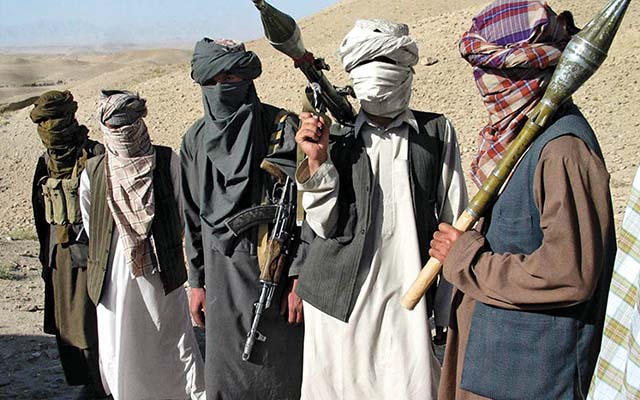About fourteen years, the tug-of-war continues between Afghan soldiers and the Taliban insurgents. The downfall of the Taliban’s regime in 2001 and establishing democracy with the support of foreign states failed to stabilize the country. The High Peace Council (HPC) was founded in 2010 and tasked with contacting the Taliban and convincing them to join the peace process. But militancy continued and civilian deaths and injuries in the first quarter of 2015 followed the record high levels of 2014. Between 1 January and 31 March, UNAMA documented 1,810 civilian casualties, a two per cent decrease from the same period in 2014.
Moreover, the death toll of Afghan soldiers, who battle against the Taliban in restive provinces, increase with each passing day. The Taliban have compounded their inroads from the beginning of 2015 and caused great havoc and large casualties in their attacks in central parts of the country such as Shah Shahid bombing in Kabul on August 07th, deadly attacks on police checkpoint in Jalriz, which left a number of Afghan police dead, an attack on a volleyball match which led to the death and injuries of dozens of civilians, the takeover of Kunduz and now the heavy inroads into Faryab, Badakhshan, Helmand, Herat and Takhar.
Seen previously as a rural militant movement capable only of hit-and-run attacks on cities, the Taliban’s aggressive campaign to capture major urban areas reveals a highly potent insurgency that poses a crucial test for Afghanistan’s overstretched North Atlantic Treaty Organisation (NATO)-backed forces.
On the night of October 4, less than a week after Kunduz fell, insurgents raided the capital of northern Faryab province bordering Turkmenistan.
“Faryab simmers dangerously. Against the backdrop of the US government’s latest extension of its military commitment to Afghanistan, it is worth noting that the province is precariously situated along the same political fault lines that recently rattled Kunduz province.
Continued instability in Faryab and its adjacent provinces risks undermining the country at a time when Afghanistan is bleeding on all fronts,” an international security consultant Morwari Zafar writes.
She further expresses that Faryab has become a safe haven to fighters from the Islamic Movement of Uzbekistan (IMU) and the Quetta Shura Taliban who have both sought to establish operational bases in a collaborative attempt to subvert the central government.
From the economic perspective, Faryab is a transit point for the Turkmenistan-Afghanistan-Pakistan-India (TAPI) pipeline. “Faryab maintains a key geographic position for Afghanistan’s economic interests. Its location and resources are indispensable to the Afghan government’s strategy of regional trade along the historical Silk Road trade route and increasing foreign investment in Afghanistan’s natural resources and extractive industry.”
The current situation represents a drastic escalation of fighting from August of this year, when Afghanistan’s first vice president General Ahmad Rashid Dostum, personally led clearance operations in the area with the Afghan military.
Similarly, the emergence and frequent offensives of the self-styled Islamic State (IS) group have further deteriorated the security situation and unleashed a sense of public fear in the air. It is said that the affiliates of IS terrorist group are competing with the Taliban group for leadership among the extremist groups operating in Afghanistan. Moreover, UN reported late in September that almost 70 militants of the IS group are busy in forming the core of the group’s branch in Afghanistan.
Showing a reaction to the current insecurity, Washington announced last week that it would slow the withdrawal of US troops from the country, with President Barack Obama admitting that Afghan forces are not yet ready to stand alone against the resurgent militants. However, it is believed that this will not be effective enough to tackle the security crisis.
Since the peace negotiation reached an impasse frequently and the “war on terror” did not bear the desired result either and the bulk of the foreign troops withdrew from the country, Afghanistan is caught in a real deadlock and has no choice other than revising its strategy for peace. On the other hand, Pakistan is pushing for negotiation despite the Afghan-Pak’s bitter relations. Pakistan’ Prime Minister Nawaz Sharif last Friday said he had told President Ashraf Ghani that Pakistan was prepared to assist with peace talks but could not bring the Afghan Taliban to the negotiating table. “Pakistan has no reason to want any violence in Afghanistan. The attacks on the Afghan government, and indeed on Pakistan, emanated from the vast areas in Afghanistan now under Taliban control,” he is quoted as saying while addressing the United States Institute of Peace (USIP). Nawaz said that over the past 14 years, a military solution had been elusive in Afghanistan. “We believe it is unlikely to be achieved in the future. Thus, achieving peace through negotiations is the best option,” he added.
There are reports that Afghan government has given the green light over peace talk. As soon as the High Peace Council declares an official statement on agreeing the issue, it would be Pakistan to nudge the Taliban to come on the table of negotiation. But the question remains is that will Pakistan succeed in bringing in peace through facilitating talk after frequent failure in this regard? The mistrust insists among the Afghan people and politicians. On the other hand, a new rift is emerging among the Taliban over electing new leader, how would Pakistan tackle this issue? These questions are to be answered by Pakistani officials.

